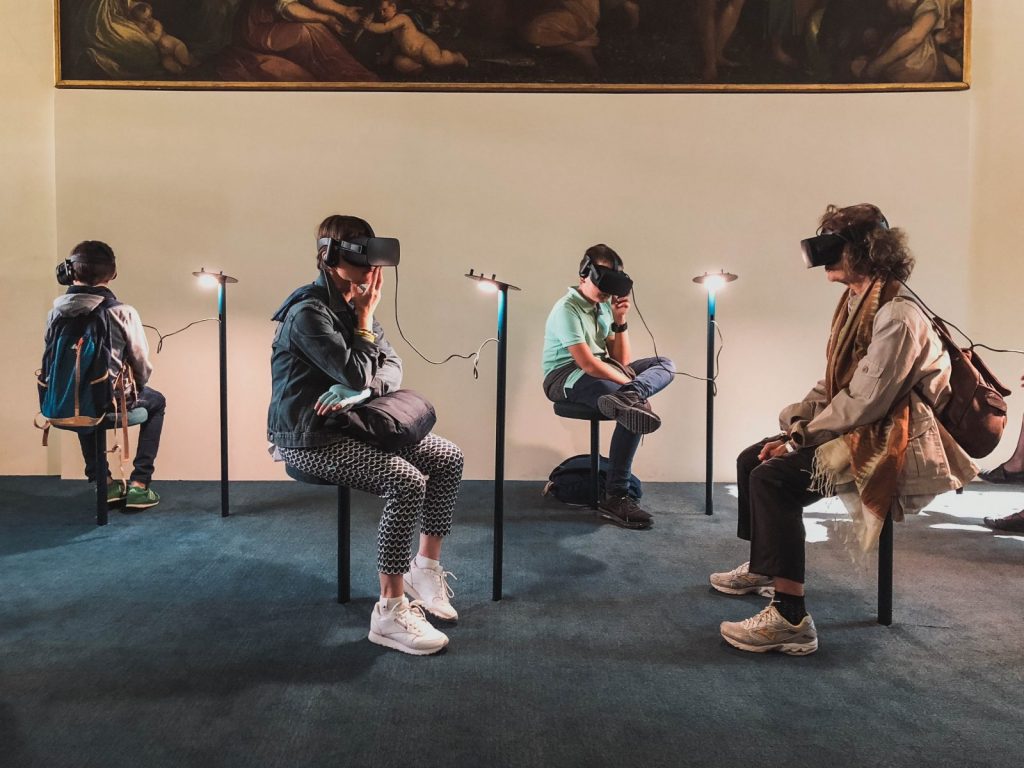
Articles
Editor’s Picks
Industry News
Learning Analytics and the Future of Edtech: David Niemi in Conversation
By Henry Kronk
December 17, 2018
We currently sit at a watershed moment in education. While technology has begun to fundamentally transform how teachers teach and learners learn, it will take some time still for many institutions to opt in to emerging technology. At the same time, much of our new technology is untested. Many parents and teachers, furthermore, remain wary of just how much technology can help them. Learning analytics expert David Niemi (VP of measurement and assessment at Kaplan Inc.) recently spoke with eLearning Inside about, among other things, the future of edtech and how it might be ideally adopted.
Earlier this year, Niemi—along with the Bill and Melinda Gates Foundation-supported a working group in which he participates—published a book. Learning Analytics in Education (Information Age Publishing) details their latest research. This article marks the second installation of a two-part interview. Read the first here.
Automation and Learning Online
To begin, automation will play a larger and larger role going forward. “Some teachers are even worried they’re going to get replaced [by a machine],” Niemi said. “We’re still a long way away from that.

“There are a lot of really bad teachers in some public school systems. We probably could do better right now to have the students who study with those teachers learn online. But there are also a lot of really good teachers. We would be lucky if we could figure out how to replicate what they’re doing with an online system. Anyways, I don’t think we’re going to see teachers replaced by systems any time soon. Technology is expensive and needs to be updated constantly.
“We can always see the trend of more and more people studying online. Traditional universities are offering more and more online courses. More students will even begin doing their whole degree program online.
“We’re going to see more and more advances in that.”
An Online Teaching Environment Presents Both Challenges and Advantages
“Unfortunately, quality in online programs right now is, overall, not that great. The tendency in the past was to take existing course work and textbook material and throw it online, put a few tests in there, and basically make students read textbooks, maybe watch a few video lectures, and then answer some questions or write a paper.
“But nobody really took advantage of what is possible online what is also difficult to do in classrooms, which is really monitor and track how students are doing. And not just in one class, but over all their classes. And not just one student, but all the students. After doing that with many students in many classes over many years, you can start to get really detailed profiles of what works for students and what does not. And then you can provide those methods and that content through the online system.
“Nothing close to that is happening on any kind of scale right now, so that’s something I could see happening in the future.”
In fact, this style of edtech-based personalized learning has drawn some criticism in 2018 among a few U.S. tech providers.
“The kinds of data we can deal with will also improve,” Niemi said. “You can use face track and facial recognition software to monitor student engagement and motivation. You can also determine when students are too tired to work and suggest when it’s time to break and how best to break up your study.”
Facial-recognition and tracking software currently stands at the edge of what is possible in edtech. Many researchers and companies are currently developing their own measures of student engagement.

“What I would be looking forward to is an education that is truly personalized or customized or some people say adapted or adaptive instruction,” Niemi said. “People use all these different terms. To me, it’s basically about using information you have about students to better match the instruction you’re delivering to them. If you find out, for example, that a student is struggling with some of the content that he or she is dealing with, you’d want to check what the nature of that struggle is. Maybe they haven’t learned the prior information they need to understand what they’re working on, or maybe it’s some kind of motivational issue. Maybe they’re feeling overwhelmed.
“So you can ask some questions. Maybe we’re collecting face data. We can use those things to determine if a student is really stressed out, or if maybe something else is going on. And then maybe you can have the system provide some support. People have been testing chatbots and those kinds of things that can have effective dialogues with students.
“You can see the beginnings of some of these things being tested now. The difference it will make, I think, is if we can get these technologies to all students, even those in the poorest districts, they’ll be getting a much better education than they are now.
“I’m not so worried about the students who make it into Harvard or Stanford. They’ll probably figure out how to learn even if they’re presented with a terrible education. But a lot of students cannot figure out how to learn on their own and really need support and help in figuring out how to deal with both situations in their life and still get through the education they want to do.”

If This Is the Future of Edtech, We Still Have a Long Way to Go
All of these edtech measures described by Niemi still present issues we have yet to overcome. Screen time is a big one. Another is data privacy and security. Many edtech in-classroom solutions have come under fire for their data collection practices. The FBI issued a PSA in September regarding the risks of eLearning. The Bureau identified numerous data breaches of edtech providers that occurred in 2017 alone.
“Parents are right to be concerned about this issue,” Niemi said. “You want to make sure that your student doesn’t get labeled in some way that can have negative consequences for them in the future. There have been a lot of people in different environments using demographic data about students to make predictions about how likely they are to succeed in particular programs. If students get labeled as ‘at-risk’ or unlikely to succeed or something, and that information is given to teachers, that affects how the teacher is going to interact with those students. Conversely, if a teacher is told, ‘These are really great students, you’re going to have a great time with them,’ they also act differently.
“You don’t want systems giving up on students based on data. Instead, you want to use the data to help students and the people working with them to figure out how to learn more effectively. That should be the point. There are always risks with the data, there is that negative potential too.
“In a classroom, you want the teacher to be assessing how well the students are doing and adjusting to that. That’s what good teachers naturally do. It makes a more effective and efficient environment for all students. But it’s very difficult.
“Let’s say you get into high school, and your English teacher has six classes with 40 students each. When I was teaching in that environment, it took me weeks just to learn everybody’s names, much less anything else about them that could have helped me help those students. If you could get some data about students that would actually help in that situation and say, ‘Here are some students that could actually use some extra help and guidance just on how to form a paragraph,’ you’re not going to start them out writing papers.
“But the basic idea, where we’re just trying to figure out which students need what help through the systems, I think that’s valid. I as a parent would say, ‘Ok, if you know what you’re doing and you’re doing it right, and I’m convinced of that, then I’m OK with that.’ Because that’s what a good teacher is already doing. The best systems are trying to replicate what a good teacher would be doing in a 1:1 environment with a student.
“We also don’t want to totally replace in-person social interactions. That is a big issue with online learning. Students feel more isolated. They feel like they’re not getting enough personal attention and help. You have to use technology in classrooms in a way that minimizes those effects and still include people working in groups and talking with one another.”
Featured Image: Francisco Gomes, Unsplash.









No Comments